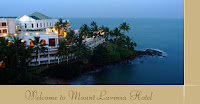Yala National Park
The second largest national park in Sri Lanka, Yala is situated in the Southeast part of the island in the dry, semi-arid climate region, bordering the Indian Ocean. The number of mammals recorded at Yala is as high as 44 while it also boasts of one of the highest leopard densities in the world. None other than the majestic Sri Lankan elephant and the leopard, take pride of place at this amazing national park.
Accommodation- in terms of hotels, the spacious and modern Yala Village takes precedence while the “Tree tops jungle lodge”, “Galapita” and the “Thippola bunglow” offer interesting and eco-friendly accommodation.
Accommodation- in terms of hotels, the spacious and modern Yala Village takes precedence while the “Tree tops jungle lodge”, “Galapita” and the “Thippola bunglow” offer interesting and eco-friendly accommodation.










































